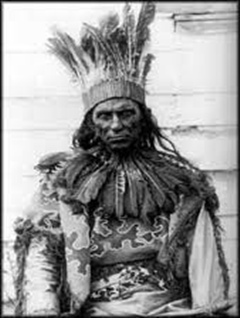BRADBY-WILLIAM
WILLIAM TERRILL BRADBY

S

NATIVE AMERICAN CIVIL WAR SAILOR
Historical records report that during the American Civil War a small number of Native Americans served in the Navy. One of the group’s most prominent was William Terrill Bradby, a member of the Pamunkey Tribe in Virginia and of Chickahominy ancestry. He was born in 1833, reportedly joined the Union forces in May 1862 and served in the Union Navy until honorably discharged on May 29, 1865. Bradby, who lived on the Pamunkey reservation in Virginia both before and after the Civil War, received no formal education. He was described as between five-feet six and five feet eight inches in height, weighing between 150 and 170 pounds, of “copper color” with a visible scar over his left eye. Like other Pamunkey men of the era, he wore his hair long in the traditional manner. Because he was largely illiterate prior to the Civil War, his recruiting officer is reported to have written his name for him when he enlisted. Bradby’s service was both on land and sea. Early during his service he served as a land guide and scout for the Army of the Potomac. He was also employed by Allan Pinkerton’s Secret Service as a spy, gathering intelligence on Confederate positions and movements. In 1863 he was transferred to “water duty” serving as a pilot second class on the James River until May 1864. While serving on board the USS SCHOCKON he was shot in the leg by a piece of Confederate shell and although it was only a flesh wound, the rheumatism that developed as a result troubled him for the rest of his life. Bradby became a pilot in the North Atlantic Blockading Squadron as the Union attempted to strangle the Confederacy’s war effort. In addition to the USS SCHOCKON, Bradby served on the USS ONONDAGE and USS HURON, gunboat monitors named after two prominent Indian tribes in the Northeast, the USS EPSILON, a picket tugboat, the chartered steamer USS DAYLIGHT and the torpedo boat USS SPUYTEN DUYVIL. Bradby received a pension for his Civil War service and became a well-respected member of his Pamunkey community after the Civil War. It has been recorded that he was Chief of his tribe, became an “Associate” of the Smithsonian Institution and was a delegate to the Columbian Exposition at the World’s Fair of 1893 as “one of the very few remaining descendants of the Pamunkey Indians of Virginia.”
Submitted by CDR Roy A. Mosteller, USNR (Ret)

